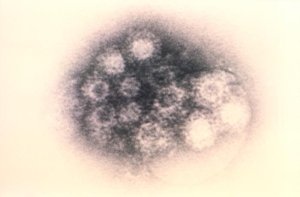Two children have been diagnosed with enterovirus D68 in Los Angeles County, including one who was treated with symptoms of partial paralysis, health officials said Wednesday.

Miller Children’s Hospital spokeswoman Wendy Dow said early Wednesday that a case of the virus was treated at the Long Beach hospital. The case, first reported Tuesday evening, marked the county’s first case confirmed instance of a virus that’s been recently spreading across the nation.
It was not immediately clear whether the child had been released, or what condition he or she was in.
Later Wednesday, the Los Angeles County Department of Public Health also confirmed one case of enterovirus had been diagnosed in a child who was treated at Children’s Hospital Los Angeles.
That case was in addition to the Long Beach case, bringing the total number of Los Angeles County cases to two.
The child had normal symptoms of a common cold, but things changed several days later.
“After almost a week of having those symptoms, (the patient) woke up and was unable to move a limb,” Dr. Grace Aldrovandi of Children’s Hospital Los Angeles said at a news conference Wednesday.
The patient had been healthy prior to the illness, Aldrovandi said. The child was between 5 and 10 years old and was discharged but still had some paralysis, the Los Angeles Times reported, citing Aldrovandi.
“We don’t know the answer, why, at this time, the virus appears to be so virulent,”Aldrovandi said.
The patient became ill in late August with a respiratory infection before developing “acute limb weakness,” a possible symptom of the EV-D68, a news release from the county stated.
The CDC was investigating a link between the virus and paralysis in children.
Several children with similar paralysis symptoms were identified last year in California, according to CNN, which also reported that samples from two of the patients tested positive for enterovirus.
“It is important to note that while enteroviruses are very common, especially among children, most cases of enterovirus will not lead to serious illness,” Los Angeles County Interim Health Officer Jeffrey Gunzenhauser stated in the release. “Acute limb weakness and other neurological symptoms are uncommon with any enterovirus, including EV-D68.
State health officials confirmed that 2014’s first four cases of the non-polio enterovirus, which can cause severe respiratory illness in children, were diagnosed in Southern California nearly two weeks ago.
On Wednesday, a California Department of Public Health stated in an email that four cases were in San Diego County, one was in Ventura County, one in Long Beach and one in Alameda.
Roughly 472 people have been sickened by the enterovirus in 41 states across the country since mid-August, according to the latest figures from the Centers for Disease Control and Prevention.
Infants, children, and teenagers are most likely to get infected with the virus and become ill, CDC stated on its website.
Symptoms include fever, runny nose, sneezing, cough and body and muscle aches. The virus can also cause more severe symptoms such as wheezing and breathing difficulty.
“These children start with what seems like a normal cold on the first day — runny nose, a little bit of cough – but by the second day, they can’t breathe at all. They come in and they need a tube to help them breathe,” said Dr. Pia Pannaraj, an infectious diseases specialist at Children’s Hospital Los Angeles.
The state health department has advised parents to seek medical attention for their children immediately if they begin to have difficulty breathing, particularly if the child has asthma. Signs that a child is having difficulty breathing include wheezing, difficulty speaking or eating, the belly pulling in with breaths, and blueness around the lips.
There is no specific treatment for the disease, nor is there a vaccine to prevent its spread.
The virus likely spreads between people when an infected person coughs, sneezes, or touches contaminated surfaces, according to CDC.
“It’s probably evolved in a way that’s allowed it to spread more easily from person to person, and that’s why we’ve seen so many more cases this year,” Pannaraj said.
To prevent children from becoming sickened by a respiratory illness, the CDC advised the following steps to help parents:
- Wash hands often with soap and water for 20 seconds;
- avoid touching your face with unwashed hands;
- avoid close contact with people who are sick;
- clean and disinfect frequently touched surfaces, especially when someone is sick;
- stay home when you’re sick;
- cover your coughs and sneezes
Parent Erin Olivera has set up a support group for parents impacted by the virus. If you’re interested in getting involved, you can contact her at Lucianolivera.weebly.com.





